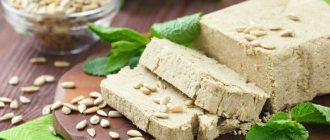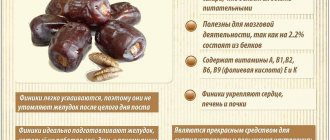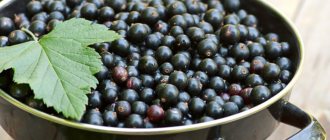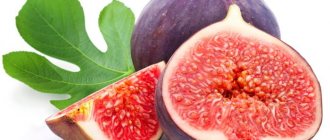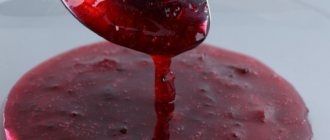Breastfeeding is a pleasant, unforgettable stage in a woman’s life. One of the significant features of lactation is a strict diet, especially in the first months, when the newborn’s digestive system has not yet fully formed.
There is a list of foods and drinks that cannot be consumed or are not recommended. Consumption of drinks containing caffeine is also prohibited. Many women are starting to drink herbal teas.
But how harmless are they? Some herbs are medicinal, which are used strictly regulated. Is it possible to use mint while breastfeeding?
The benefits of mint during breastfeeding
It is rich in useful substances and has a beneficial effect on the body of mother and child.
Mint helps a nursing mother relax during lactation.
It also helps relieve headaches, which often worries mothers so much. Interesting!
Mint copes with the task of preventing colic in a newborn.
Since the substances contained in mint pass into breast milk and enter the baby’s body, this seasoning also helps remove excess body fluid. An interesting property is the prevention of the inflammatory process.
Many people, with the exception of its interesting taste, like it because it improves the functioning of the digestive system. It reduces flatulence, eliminates heartburn, and increases appetite. Mint is a natural antiseptic and is excellent at killing harmful germs. Now we can say with certainty that mint is a truly amazing find! It contains a unique amount of useful substances. But how will an infant’s body react to this?
Conclusion: can a nursing mother have mint tea?
We can say that a nursing mother can take mint tea. However, the amount and frequency of use of this drink varies depending on the variety of mint and the characteristics of the organisms of the mother and her child. So, when breastfeeding a baby, a woman can safely enjoy a cup of weak tea every day with the addition of spearmint, which contains a small amount of menthol. Rarely drinking peppermint drink will also not harm your mother. But, if a child, after his mother drank any mint tea, developed any uncharacteristic negative symptoms, then it is better for the woman to refuse to continue taking the drink.
It is important to understand that your favorite tea is not capable of harming a nursing mother in the same way as if she did not get enough sleep, was very tired, or was nervous because of a quarrel with a loved one. There is no need to completely limit yourself to small joys! After all, the period of breastfeeding is far from the easiest stage in the life of any woman.
Note! Herbal tea lovers can replace peppermint with other herbs. For example, nursing mothers can enjoy the taste and aroma of a chamomile drink. Women who are breastfeeding their “flower of life” can safely consume lemon balm tea.
A nursing mother is allowed to drink peppermint tea only in extremely limited quantities. When choosing raw materials for mint tea, it is better to prefer spearmint. The most important thing is to remember that when taking any drink you need to know when to stop. If drinking mint tea makes both a woman and a child feel good, then why not give yourself such joy?!
Harm of mint during breastfeeding
Alas, this miracle, which is a treasure trove of vitamins, is not entirely safe for babies.
There are many different types of mint in the world. One of the most popular is pepper. It contains a large dose of menthol. This is very dangerous, since all the oils that pass into mother’s milk will definitely enter the child’s body.
Important!
Menthol affects the baby's heartbeat, as a result of which the heart rhythm may be disrupted.
This is dangerous because it can be fatal.
Mint acts to reduce lactation. The menthol it contains can affect your milk supply. Doctors try not to prescribe medications containing menthol to nursing women so as not to reduce lactation.
It's no secret that it stimulates the production of estrogen, the female hormone. While in men, testosterone decreases significantly. Therefore, it is dangerous to drink drinks with a high content of mint while breastfeeding a boy. It is better for mothers to completely avoid eating dishes containing this seasoning for a while, so as not to disrupt the full development of the newborn.
Useful properties of mint
This plant has a large list of useful qualities, thanks to the valuable components it contains. Therefore, the consumption of mint during breastfeeding in moderate quantities and special varieties is not prohibited. It is used:
- with motion sickness, attacks of nausea;
- for colds, since it has antiviral and anti-inflammatory effects;
- for insomnia, to calm the nervous system, which is important in case of excessive fatigue, anxiety, and stressful situations;
- in case of interruptions in the functioning of the gastrointestinal tract, mint can eliminate flatulence;
- has an antispasmodic effect;
- for sprains and bruises, some types of mint can reduce pain.
We should not forget about contraindications, the main one of which is individual intolerance to its components. Also exclude if you have low blood pressure or a tendency to varicose veins.
What kind of mint can mothers use during breastfeeding?
Eating peppermint is dangerous due to the menthol content it contains. But there is a great alternative, spearmint. It is a little less common, but it is the safest to feed. This mint contains carvone, this substance stimulates lactation. You can safely take spearmint tea as food, but do not forget about reasonable dosages.
Choosing a mint variety
Mint is a plant that has many varieties, about 25. Each type may have different active ingredients that produce one or another effect. Therefore, it is necessary to know their effect on the body.
- Peppermint contains 60% menthol. This substance provides a special aroma and color to the drink. But it is not safe for women. It is recommended to consume no more than one cup per week, following brewing recommendations.
- Spearmint or other names: spearmint, garden mint, are safe for women while breastfeeding. It does not have menthol, but contains carvone, a component that has a positive effect on the feeding process, since it has a milk-producing property. It is also found in fennel and caraway seeds. Decoctions of these herbs are allowed for children from birth, so garden mint decoction is safe for consumption.
- Lemon, better known as lemon balm. In fact, it is not mint; they belong to the same family, but to different genera. Essential oils are contained in it in minimal volumes. It can relieve fatigue, calm, and reduce susceptibility to depression. This is important in the postpartum period, since against the background of hormonal changes in the body, a woman is susceptible to depressive moods. It has a beneficial effect on the emotional background, which is very useful for feeding, since an anxious state negatively affects lactation.
When feeding, it is important to remember that natural food is the only and most important for the baby. Thoughtless use of medications or food consumption can affect the baby. After all, everything that mother eats will be received by her baby. Therefore, you need to choose your diet and food products very responsibly. The health of the newborn comes first in this matter.
When and in what quantity can you start using mint?
Before eating mint, you should visit a therapist and pediatrician. These specialists will be able to accurately and correctly select the correct dosage of the new product. It may also turn out that mom shouldn’t eat mint at all. Any new product introduced can cause a different reaction. The opinion that natural herbs cannot cause an allergic reaction is absolutely wrong. It is better to start trying a drink containing mint with a few sips at breakfast. It is advisable if this happens after feeding the baby. And carefully monitor the child’s condition for several days.
If an allergic reaction is not observed, then the dose can be gradually increased. But drinking mint drink should be in moderation.
At what age can children be given mint and drink mint tea?
Peppermint (lat. Méntha piperíta) is beneficial for children for a number of indications. It improves digestion, reduces gas formation, and calms. But it is dangerous due to possible allergies. The trick is to introduce it into the children's diet in tiny doses and on time.
depositphotos.com. Belchonock.
How to choose fresh mint?
If a decoction of mint for bathing can be prepared from dry pharmaceutical herbs, then for tea you need to take only fresh
Therefore, it is important to know the basic rules of purchase
- Choose plants in bunches or loose rather than hermetically sealed. This way you will have the opportunity to evaluate the condition of the leaves, their freshness and aroma.
- Buy mint only from trusted sellers, ideally from your personal garden.
- The leaves should be elastic, fresh in appearance, uniformly rich in color, without signs of rotting or dryness, spots or plaque.
- Unnatural gloss indicates the use of agricultural waxes, which extend shelf life. Such substances are unsafe for children and are difficult to wash off with water.
- The characteristic aroma should be enhanced by rubbing a mint leaf between your fingers. Foreign odors (rotting, dampness, etc.) are a reason to refuse the purchase.
- Do not purchase wet grass: it means it was sprayed with water before being sold. Such raw materials will quickly deteriorate.
- The cut of the stem should not ooze or, on the contrary, be dry.
It is not advisable to treat your child with mint sweets, be it candy or gingerbread. These confectionery products sometimes use substitutes for real herbs.
When studying the composition indicated on the label, you can find: mint syrup, essence, flavorings.
Many of these substances are made from natural plants, but they also contain additional impurities that are harmful to the child.
The exception is mint lozenges sold through pharmacy chains against coughs or motion sickness. They contain natural mint essential oil - a concentrated extract from the leaves.
Parents should weigh the pros and cons before introducing mint to their baby.
In what form can mint be consumed during breastfeeding?
A suitable option would be to use mint in drinks. This could be warm tea or a soft drink.
Important!
It is strictly forbidden to chew fresh mint leaves! Due to the content of essential oils in them, the leaves become very dangerous for the fragile digestive system of the baby.
As for toothpastes containing menthol, they are completely safe.
Mint tea. Benefit. Properties.
- I would like to note the cooling properties of mint tea, which is very important on hot days. It is thanks to the menthol content in mint leaves that mint has such a characteristic taste and aroma.
- Peppermint tea is used as a sedative and analgesic for stress and nervous overexcitation.
- Mint tea is very useful to drink for stomach and intestinal spasms, as this drink has antispasmodic and anti-inflammatory properties.
- Mint tea with honey is useful for any colds.
- Mint tea is drunk for migraines and headaches, and for hypertension.
- Peppermint tea is used for nausea.
- Peppermint tea has a calming effect on the nervous system, so it is useful to drink it at night for insomnia. It is best to drink it in combination with honey.
- This drink helps with a runny nose. When nasal congestion occurs, it facilitates nasal breathing.
In our modern world, where stress is a common thing, a cup of mint tea will help cope with stress. Peppermint tea will help you calm down and relax. Moreover, it is a natural medicine.
Let's look at whether mint tea has any contraindications, as well as what harm it can cause to our body.
Recipes for drinks using mint for breastfeeding
Here we will look at recipes for mint drinks that will have a certain effect on lactation.
Mint drink recipe 1
This recipe helps reduce lactation.
Ingredients:
- 4 teaspoons of dry mint leaves;
- 1 liter of boiling water.
Pour water over mint and leave. Drink 3-4 times a day. Store in the refrigerator; the next morning the drink is not suitable for consumption.
Mint drink recipe 2
This recipe helps increase lactation.
Ingredients:
- 2-3 leaves of mint;
- a glass of boiling water.
Pour water over mint. Leave covered for half an hour. To increase lactation, drink 200 grams per day.
The difference between peppermint and spearmint
In nature, there are more than twenty varieties of mint. They all differ in their chemical and energetic composition, properties and characteristics.
If peppermint helps reduce lactation, then curly mint, on the contrary, provides a rush of milk, helps to establish its production so that the child can get enough.
The thing is that spearmint does not contain menthol in such large quantities. The main component of the composition is kavron (an essential oil that stimulates milk production).
Many women brew spearmint and improve the lactation process.
Reviews from mothers about mint
Elena, 29 years old. I tried drinking mint tea to reduce lactation. And it really works! There was no rash. And the child got used to it, then she stopped breastfeeding. Natural product, no chemicals! Second birth, there was a lot of milk. But we coped with this task, I highly recommend it to everyone if they don’t have allergies.
Svetlana, 22 years old. I really love tea with this herb. I treated myself once, my son reacted normally. Plus, lactation has increased, which I am very happy about. My son is 8 months old, I drink tea 3-4 times a week. But for cooking I use exclusively mint. I know about the negative effects of peppercorn, so I’m afraid to give it.
How often should you drink mint drink?
During the lactation period, drinking one cup of mint tea per week is allowed. You need to take into account that the cup should not be too large: a standard 200 ml mug is the most suitable volume.
Tea with mint during breastfeeding will only be beneficial if trying a few sips does not have any negative effect on the baby. This is a fundamentally important point.
Use in the first month of breastfeeding
A newborn baby is at the most sensitive age, and his fragile body is just beginning to get used to the environment. To help him with the adaptation process, pediatricians recommend following a strict diet and eliminating foods and drinks that cause colic from the diet.
There are no studies on how mint affects the baby or milk production in the first postpartum month. However, in order to reduce possible risks, it is recommended to refrain from using mint infusions in the first month.
But if you refuse breastfeeding, on the contrary, you can and should use peppermint. It contains a large amount of menthol, which affects the mammary glands and reduces lactation. It is applied as follows.
- Add 2 tbsp to half a liter of warm boiled water. peppermint leaves and let steep for an hour. If the herb is in bags, then brew one or two bags per glass of boiling water.
- Then filter and take 2-3 tbsp. tea before meals.
It is advisable to prepare a fresh decoction every day.

